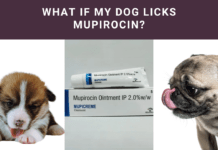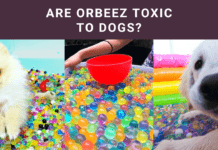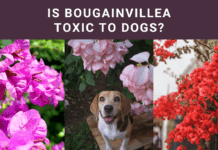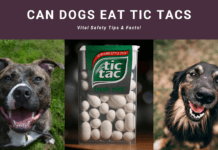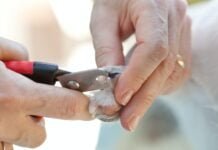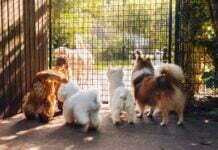

Every dog lover knows the joy of welcoming a new litter of puppies. It’s a heartwarming sight, watching a mother care for her little ones. But what happens when that care seems, well, a bit too rough? You’re not alone if you’ve ever exclaimed in distress, “My dog keeps squishing her puppies!” It’s a concern that many pup parents across the States face, and it’s enough to make anyone’s heart skip a beat. But before we jump to conclusions, it’s crucial to understand the reasons behind such behavior.
Is it a sign of distress, a lack of space, or just a motherly instinct gone awry? Whatever the cause, rest assured, there are solutions at hand. By the end of this read, not only will you be equipped with the knowledge to address this issue, but you’ll also find tips to ensure the safety and happiness of your furry family. So, hang tight, fellow dog enthusiast, as we dive deep into this canine conundrum. And remember, every challenge we face with our four-legged friends is just another opportunity to strengthen our bond.
Unraveling the Mystery: Why Does She Do It?
Every dog owner’s journey is filled with moments of joy, surprises, and sometimes, puzzling behaviors. When it comes to the perplexing act of a mother dog seemingly squishing her puppies, several factors might be at play.
Health Concerns of the Puppies
First and foremost, let’s address a heartbreaking possibility: the health of the puppies. It’s a tough pill to swallow, but sometimes nature has its way of intervening. In the wild, animals often instinctively sense when something’s amiss with their offspring. If a puppy is unwell or has underlying health issues, the mother might, intentionally or not, push it aside or even lay on it. This behavior can be linked to the age-old survival instinct, where the mother might be trying to protect the healthier pups. It’s also worth noting that some mothers might confuse the signs of a puppy being unwell with the natural behaviors of newborn pups.
Mother’s Health and Behavior
On the flip side, the mother’s health and emotional state play a pivotal role. Just like humans, dogs can experience postpartum depression or anxiety. A stressed or anxious mother might accidentally harm her puppies without any malicious intent. Additionally, if she’s in pain or discomfort from the birthing process or an unrelated health issue, she might unintentionally squish her puppies while trying to find a comfortable position. It’s essential to monitor her behavior and consult a vet if she shows signs of rejecting her puppies or other unusual behaviors.
The Space Factor: Is It Enough?
Lastly, let’s talk logistics. Imagine trying to juggle a litter of wriggling puppies in a cramped space. Not the easiest task, right? If the whelping box or area isn’t spacious enough, the mother might inadvertently squish her puppies simply because there isn’t enough room to maneuver. Ensuring she has ample space is crucial, not just for the safety of the puppies but for her comfort too.
Piecing together the puzzle of this behavior requires a blend of understanding, observation, and sometimes, professional advice. As we delve deeper into this topic, we’ll explore more about the potential dangers and how to prevent them. Because, at the end of the day, every dog lover’s goal is the same: ensuring the safety and happiness of their furry family.
The Heart-Wrenching Reality: Can Puppies Suffocate?
It’s every dog owner’s nightmare: the thought of those tiny, fragile puppies facing any harm, especially under the weight of their own mother. The question that often haunts many is, “Can these little ones actually suffocate?” Let’s dive into this gut-wrenching concern.
The brief yet grave response to My Dog Keeps Squishing Her Puppies is, indeed, yes. Puppies, in their initial weeks, are exceptionally vulnerable. Their minuscule lungs and delicate bones aren’t designed to endure significant pressure. If a mother dog, bearing her full weight, unintentionally lies atop a pup, the danger of suffocation escalates. It’s not merely the physical weight; the restricted airflow can swiftly transform a benign slumber into a perilous predicament.


But why would a mother, driven by instinct to protect her litter, end up in such a position? As we’ve discussed, various factors come into play, from health concerns to spatial issues. Sometimes, it’s just a tragic accident.
It’s essential to remember that while these incidents can happen, they’re not always the norm. With the right precautions, understanding, and vigilance, risks can be minimized. But if the unthinkable does occur, knowing how to respond swiftly and effectively is crucial. As we venture further, we’ll arm you with the knowledge and steps to take immediate action, ensuring the safety of those little furballs we all adore so much.
Immediate Actions: Saving a Squished Puppy
In the blink of an eye, a moment of joy can turn into a heart-stopping emergency. If you ever find yourself in the unfortunate situation where a puppy has been squished, knowing the right steps to take can make all the difference. Let’s equip you with the knowledge to act swiftly and effectively.
Puppy CPR: A Lifesaver
Imagine the panic of finding a lifeless puppy. It’s a situation no one wants to face, but being prepared can be a game-changer. Here’s a quick step-by-step on puppy CPR:
Check for Breathing: Gently place your hand or ear near the puppy’s nose and mouth. If you don’t feel or hear any breath, it’s time to act.
Position the Puppy: Lay the puppy on its right side on a flat surface.
Compressions: Using two fingers for smaller pups or the palm for larger ones, press down gently on the ribcage, right behind the front legs. Aim for about 100-120 compressions per minute.
Breaths: After 30 compressions, give the puppy two rescue breaths. Hold the snout closed and breathe into the nose until you see the chest rise.
Continue: Repeat the compressions and breaths until the puppy starts breathing or until professional help arrives.
Preventing Future Incidents
While immediate action is crucial, prevention is the best medicine. Here are some tips to ensure history doesn’t repeat itself:
Monitor Mom and Pups: Especially during the first few weeks, keep a close eye on the mother and her litter.
Spacious Whelping Box: Ensure the box is large enough for the mother to move without stepping on her pups.
Regular Vet Check-ups: Regular check-ups can help identify and address any health concerns early on.
Educate Yourself: The more you know about dog behavior and health, the better equipped you’ll be to prevent accidents.
With these tools in your arsenal, you’re better prepared to ensure the safety and well-being of every member of your furry family. As we delve deeper, we’ll explore the intricate dynamics between mother and puppy, shedding light on their unique bond and behaviors.
Mother-Puppy Dynamics: Understanding Their Relationship
The bond between a mother dog and her puppies is profound, intricate, and sometimes, a tad perplexing for us humans. As we navigate this unique relationship, it’s essential to understand the nuances that come into play, ensuring the well-being of both the mother and her litter.
The Biting Concern: Why Mothers Might Bite Their Newborns
It’s a sight that can send shivers down any dog lover’s spine: a mother dog nipping at her newborns. But before jumping to conclusions, it’s crucial to understand the reasons. Sometimes, it’s a gentle corrective measure, teaching the pups boundaries. Other times, it might be an instinctual response to perceived threats, even if they’re unfounded. Stress, discomfort, or past traumas can also play a role. The key is observation and intervention when necessary. If the behavior seems aggressive or harmful, it’s time to step in and consult a vet or dog behaviorist.
The Balance: Alone Time vs. Supervision
Every parent, whether human or canine, needs a break. But when is it okay to leave the puppies alone with their mom? Generally, during the first few weeks, constant supervision is a good rule of thumb. As the puppies grow and become more independent, you can allow for more alone time. However, always ensure the environment is safe, and there’s no risk of accidents. Trust your gut; if something feels off, it’s better to be safe than sorry.
Night-time Dilemmas: Should They Sleep Together?
Night-time can be a tricky period. While it’s natural for a mother to want her puppies close, there’s also the risk of accidents in the dark. Ideally, the mother and puppies should have a spacious, comfortable, and safe sleeping area. Using barriers or puppy rails can prevent the mother from accidentally rolling onto her pups. And remember, regular check-ins, even at night, can give you peace of mind.
Proactive Measures: Stopping the Crushing
Prevention, as they say, is better than cure. When it comes to the safety of those adorable furballs, being proactive can make all the difference. Let’s delve into the measures you can take to ensure that the crushing incidents become a thing of the past.
Crafting the Perfect Whelping Space
Setting up the ideal whelping space is paramount. Think of it as crafting a nursery for newborns. The area should be spacious, allowing the mother to move freely without stepping on her pups. Consider using a whelping box with raised edges, which provides a safe barrier preventing puppies from getting trapped. Ensure it’s in a quiet corner, away from the hustle and bustle, offering mom and pups some much-needed tranquility.
Regular Puppy Check-ins: A Must-Do
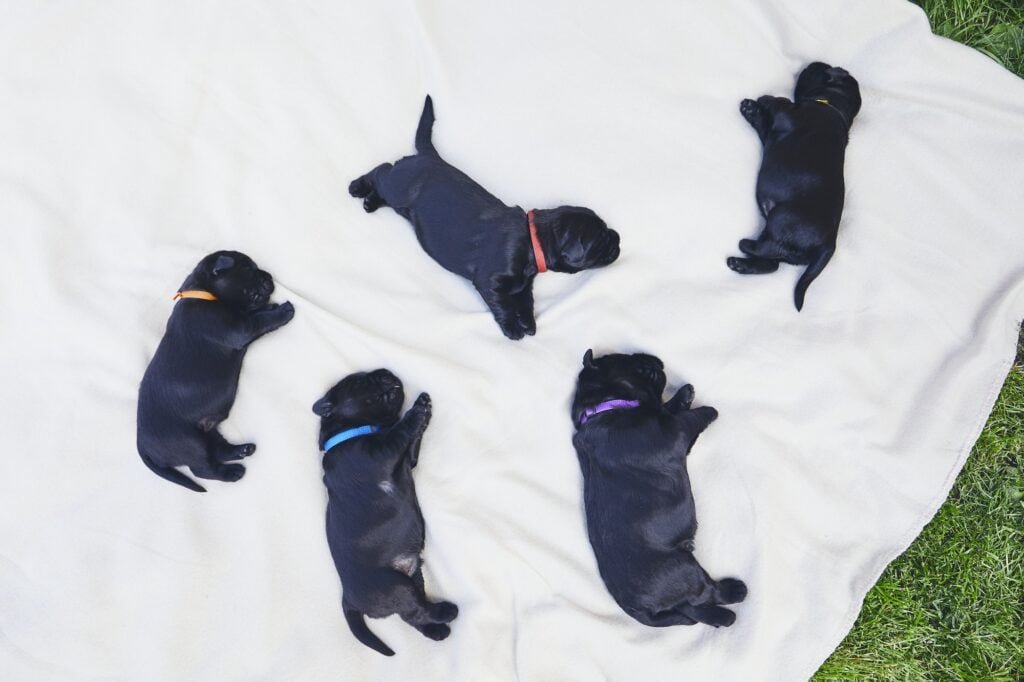

While it’s tempting to let the mother do her thing, regular check-ins are non-negotiable. These aren’t just to monitor their interaction but to ensure each puppy is thriving. Feel for warmth, check for regular breathing, and ensure they’re feeding well. These simple checks can alert you to potential issues before they escalate.
Uncovering Underlying Issues
Sometimes, the root of the problem lies deeper than surface-level observations. Is the mother showing signs of stress or anxiety? Are there any indications she’s unwell or in pain? Addressing these concerns early can prevent unwanted incidents. Regular vet visits, especially post-delivery, can help identify and tackle any health or behavioral issues head-on.
As we continue to navigate the intricate world of mother-puppy dynamics, it’s essential to stay informed and vigilant. Up next, we’ll debunk some common myths and answer those burning questions that every dog lover has on their mind. Because, at the end of the day, knowledge is the key to a happy, healthy furry family.
My Dog Keeps Squishing Her Puppies: Common Myths & Questions Addressed
The world of canine behavior is riddled with myths, misconceptions, and a ton of questions. As dog lovers, it’s only natural to seek answers, especially when it concerns the well-being of our furry friends. Let’s tackle some of the most commonly asked questions and bust those myths wide open.
Why do some dogs eat their puppies?
It’s a distressing thought, but it can be rooted in various reasons. Some mothers, especially first-timers, might get overwhelmed or stressed, leading to this behavior. In other cases, if a puppy is sick or weak, a mother might instinctively cull it to focus on the healthier ones. It’s nature’s harsh way, but it’s driven by survival instincts.
Are there signs that a mother dog is rejecting her puppies?
Absolutely. If she consistently avoids feeding them, becomes aggressive, or isolates herself, these could be red flags. It’s essential to intervene and consult with a vet in such cases.
Is it normal for puppies to squeal a lot?
While occasional squeals when they’re hungry or jostling for a feeding spot are normal, constant crying can indicate discomfort, cold, or other health issues. Always best to keep an ear out and act if it seems excessive.
How can I ensure my dog doesn’t harm her puppies in the future?
Knowledge and observation are your best pals here. Understand your dog’s behavior, provide a safe environment, and ensure regular health check-ups. If you notice any signs of stress or aggression, it’s time to consult a professional.
In Conclusion: Ensuring Safety & Happiness for Your Canine Family
Navigating the intricate world of canine motherhood can be a rollercoaster of emotions. From the joy of welcoming a litter of puppies to the concerns about their safety, every dog owner’s journey is unique yet universally relatable. The key lies in understanding, empathy, and proactive measures.
It’s essential to remember that, just like humans, dogs have their instincts, behaviors, and challenges. While some actions, like a mother dog’s protective nature or even the distressing act of a dog eating her puppies, might baffle us, they often have deep-rooted reasons in nature and nurture. Recognizing the signs, whether it’s a mother dog rejecting her litter or the puppies’ health concerns, can make all the difference.
Armed with knowledge, a sprinkle of patience, and a dash of love, you can create a harmonious environment for your furry family. Regular check-ins, a safe whelping space, and understanding the underlying issues are your tools to ensure happiness and safety.
To all the dog lovers out there, remember: your journey with your canine family is filled with learning curves. Embrace them, learn from them, and always lead with love. After all, the paw prints they leave on our hearts are everlasting. Here’s to many more tail-wagging moments and wet-nosed kisses!
Related Articles:

